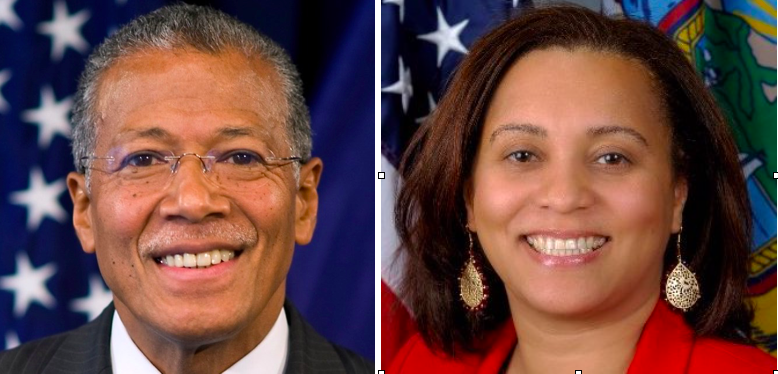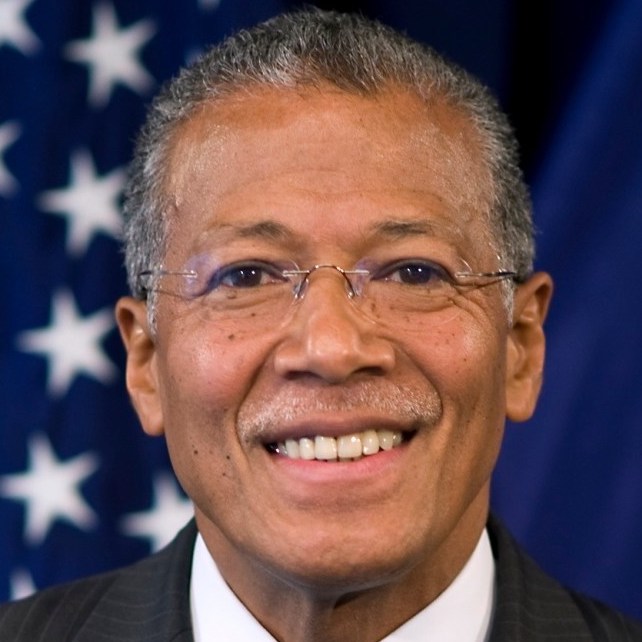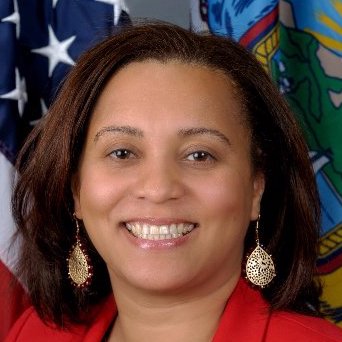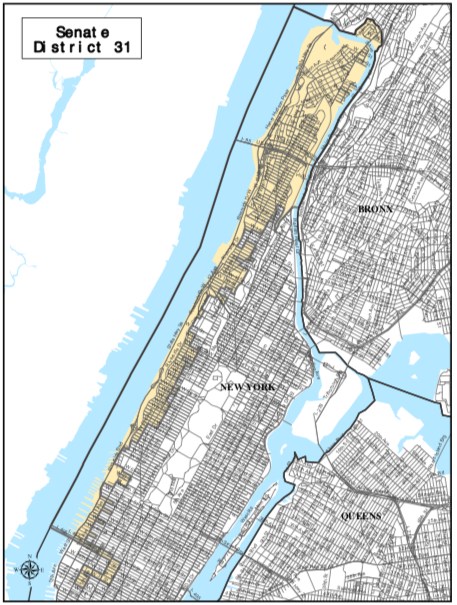Senate District 31 Showdown: Robert Jackson vs. Marisol Alcantara
12:01 AM EDT on September 7, 2018

Insurgents are challenging incumbents in Albany this year like never before — and for good reason: The State Senate's failure to pass speed camera legislation this summer, the legislature's stall on congestion pricing, and the upper chamber's general political dysfunction are motivating people to focus on whether Albany itself is working.
So Streetsblog asked candidates in the upcoming Democratic primaries to answer basic questions about street safety and mobility (archived here). Today we look at the 31st Senate District, which covers a thin swath of the West Side, the Upper West Side, Harlem and Washington Heights and all of Inwood. This race breaks the mold, pitting longtime former City Council Member Robert Jackson against first-term incumbent Marisol Alcantara. As a point of reference, StreetsPAC endorsed Jackson.
Here are the candidates' answers, unedited, with a map of the district at the bottom of this post:
Do you support congestion pricing in New York City? If so, in what form? If not, why not?
JACKSON: Our subways keep this city and our economy moving, and right now everyone knows they are broken. This is particularly important in this district that has one of the lowest percentage of car ownership anywhere. Fixing them will take better management, setting real priorities and a reliable funding stream. I support the concept of congestion pricing, but at the same time we need to enact policies that insure upper Manhattan doesn’t become a parking lot for those coming into the city but not wanting to enter the congestion zone and our subway system can handle the new users.
ALCANTARA: I support imposing a congestion fee in the Main business districts of Manhattan (bellow 96th Street) but I also believe that we must find a way to treat taxis and livery vehicles fairly, so that the imposition of such a fee does not further damage an industry that is currently struggling so badly that drivers have been driven to suicide.
Subway ridership is down and New York's buses are slower than ever. What will you do in Albany/are doing in Albany to fix it?
JACKSON: Governor Cuomo is the key to fixing the subway. He runs the MTA and he plays the dominant role in the budget and legislative process to come up with a long term solution to fix the subway and make sure there is the funding needed to make it happen. Simply put we need better management and more funding.
Congestion pricing is a start. But we also need to make sure it is spent well focusing updating and upgrading the system rather than vanity projects. We must modernize our transit system, by upgrading subway signals, rolling out new stock, introducing a new payment system, and dedicating more street space to buses, among other initiatives. I’m hopeful with the Byford Plan – but we also need the public will to make it happen. Subways and buses integral to City success – particularly this District – and we must make sure the system is reliable.
ALCANTARA: I will fight to ensure that the State government lives up to its promise to fund the current MTA capital plan with over $8 billion in state funding.
I also support finding new ways to bring in funding for the MTA’s capital and operational needs without biting into people’s pockets with higher fares.
I look forward for a debate in Albany about the merits of ideas like the MoveNY plan, or other ideas for funding on the table such as value capture surcharges to finance new projects, and I want there to be a decision made about which we should implement in 2019.
MTA capital projects routinely cost five times as much as transit projects in other cities. How will you exert pressure on the MTA to control costs?
JACKSON: On the State level, we need real oversight hearings like we have in the City Council. When I was Chair of the City Council Education Committee and we found PCBs in our classrooms, we held hearings and said the Mayor’s 10 year plan was not fast enough – and we got results. This is not happening on the State level and too often Boards and Commissions like the MTA lack real scrutiny. We must change this if we are going to make the system work.
ALCANTARA: Ensuring the functioning of the MTA is critical for my district, in which a significant majority of residents commute using transit. My district also has many stations accessible only through elevators, making MTA capital disruptions a real pain to me constituents.
I have been disturbed by talk that puts the blame for the high cost of MTA contracts on unions – other countries are able to build their subways for less money without paying people who are risking their lives daily a pittance. Studies have shown that union labor will build more efficiently and cheaply than using outside contractors. There are many factors for the high cost of MTA capital construction, including the fact that our infrastructure is so old and that most of our other infrastructure is also buried, which means that any major underground project will be highly disruptive.
Reports have shown that there are too few companies bidding for MTA projects, and a lack of competition for projects is going to drive costs up. In addition, large amounts of money is spent on paying consultants, driving our design costs up. The legislature needs to pass new laws that will force the MTA to tighten its oversight of contracts, to limit the number of expensive work changes that happen, and to ensure that projects are efficiently staffed. Sadly, no one at the MTA seems to be minding the store and the taxpayer’s dollars.
How would you make streets in your district safer for walking and biking? Do you support the city's construction of protected bike lanes? If so, why? If not, why not?
JACKSON: We must make our streets safer for walking and biking, including pursuing improvements to the Hudson River Greenway. With bike lanes we must study better where they work best so that they are safe for bikers and keep the city moving.
ALCANTARA: We need to not only ensure that speed cameras by schools remain on, but we need to expand the number of cameras deployed and make the other changes to the program that advocates have been pushing for. This will make it safer for not only more schoolchildren, but all residents who walk and bike through these zones.
I support protected bike lanes, but I believe that they need to be installed on those streets which will be safest for cyclist, pedestrians, and motorists alike. The City should consider less crowded side streets as possible locations for crosstown bike lanes, if it would increase safety overall.
What is the single biggest thing the state should do to get reckless drivers off New York City streets?
JACKSON: I support enhancing civil and criminal penalties under New York State law for careless, reckless, and aggressive driving, speeding, or driving without a valid license.
ALCANTARA: We should make sure that crashes are investigated thoroughly, and if people are found to have committed reckless acts that endangered or harmed others, they need to be prosecuted. As long as people who hurt others through bad driving are not penalized, reckless driving will continue to thrive.
I also support increasing the use of a complete streets approach so that the safety and convenience of all users of our roads and sidewalks are accounted when we do capital projects to improve existing city streets.
Is there a safety, design or enforcement strategy that is not being deployed that you think is vital to making our roadways, sidewalks and public spaces work better for everyone? (Hint: This is a "visionary" question, so don't think small.)
JACKSON: We need to improve the quality and variety of transportation choices to make it easier to get around and more sustainable for the future. This includes enhancing our bus system with fresh thinking and continued use of ferries.
ALCANTARA: We should examine how goods are brought into the city – a lot of the traffic into NYC comes from freight being delivered, and only a small number of locations account for a significant portion of this traffic. If the city came up with a more rational plan for commercial deliveries into the city, perhaps by limiting them to certain hours, we could make a significant impact on traffic congestion.
How often do you bike to the office (be honest)?
JACKSON: A couple times a week – at least. I ride it to area events.
ALCANTARA: I do not bike to the office.
Gersh Kuntzman is editor in chief of Streetsblog NYC and Streetsblog USA. He also writes the Cycle of Rage column, which is archived here.
Stay in touch
Sign up for our free newsletter
More from Streetsblog New York City
Justice Dept., Citing Streetsblog Reporting, Threatens to Sue NYPD Over Cops’ Sidewalk Parking
The city is now facing a major civil rights suit from the Biden Administration if it doesn't eliminate illegal parking by cops and other city workers.
What to Say When Someone Claims ‘No One Bikes or Walks in Bad Weather’
Yes, sustainable modes are more vulnerable to bad weather. But that's why we should invest more in them — not less.
NYC Transit’s New Operations Planning Chief Wants To Fight ‘Ghost Buses’
One-time transit advocate and current MTA Paratransit VP Chris Pangilinan will oversee bus and subway operations for the whole city.
Friday’s Headlines: Gimme Bus Shelter Edition
The days of the Landmarks Preservation Commission reviewing every proposed bus shelter in landmarked districts may be no more. Plus more news.
Deal Reached: Hochul Says ‘Sammy’s Law’ Will Pass
The bill, though imperfect, has been four years in the making.







